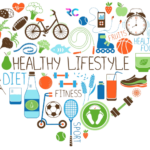:max_bytes(150000):strip_icc()/what-is-wrong-with-my-stomach-4138111-5c454a7cc9e77c0001b21d85.png)
Digestion is a complex and essential process that allows our bodies to break down food into nutrients for energy and growth. When this intricate system encounters disruptions, it can lead to various digestive disorders. In this comprehensive article, we will explore some of the most common digestive disorders, their symptoms, and how they impact the lives of millions of people worldwide.
1. Gastroesophageal Reflux Disease (GERD)
Symptoms:
- Heartburn: A burning sensation in the chest, often after eating or at night.
- Regurgitation: Sour or bitter-tasting acid backing up into the throat.
- Difficulty swallowing: Feeling like food is stuck in the throat.
- Chronic cough: A persistent dry cough can be a symptom, especially when lying down.
GERD occurs when stomach acid frequently flows back into the esophagus, causing irritation and discomfort. If left untreated, it can lead to more severe complications such as esophageal ulcers or strictures.
2. Irritable Bowel Syndrome (IBS)
Symptoms:
- Abdominal pain and cramping: Often relieved after a bowel movement.
- Diarrhea, constipation, or alternating between both.
- Bloating and gas: Excessive gas and discomfort in the abdominal area.
- Mucus in stool: Unusual mucus may be present in the stool.
IBS is a functional gastrointestinal disorder characterized by recurring abdominal pain and changes in bowel habits. The exact cause is unknown, and it can be triggered or exacerbated by stress, certain foods, and hormonal changes.
3. Inflammatory Bowel Disease (IBD)
Symptoms:
- Abdominal pain and cramping: Often severe and accompanied by weight loss.
- Diarrhea: Frequent and bloody stools.
- Fatigue: Ongoing inflammation can lead to persistent tiredness.
- Reduced appetite: Loss of appetite due to digestive discomfort.
IBD includes two main conditions: Crohn’s disease and ulcerative colitis. Both involve chronic inflammation of the digestive tract but affect different parts of the gastrointestinal system. These conditions can lead to complications like strictures, abscesses, and malnutrition.
4. Celiac Disease
Symptoms:
- Digestive issues: Diarrhea, bloating, and abdominal pain.
- Skin problems: Itchy, blistering skin rash (dermatitis herpetiformis).
- Fatigue: Ongoing tiredness and weakness.
- Nutrient deficiencies: Due to malabsorption of nutrients.
Celiac disease is an autoimmune disorder triggered by the ingestion of gluten, a protein found in wheat, barley, and rye. It damages the lining of the small intestine, affecting nutrient absorption and leading to various symptoms.
5. Gallstones
Symptoms:
- Abdominal pain: Often severe, especially after eating fatty foods.
- Nausea and vomiting: May accompany pain attacks.
- Jaundice: Yellowing of the skin and eyes.
- Back pain: Pain can radiate to the back between the shoulder blades.
Gallstones are solid particles that form in the gallbladder, a small organ that stores bile produced by the liver. When gallstones block the bile ducts, they can cause painful attacks and potentially lead to complications like pancreatitis.
6. Diverticulitis
Symptoms:
- Abdominal pain: Usually on the lower left side.
- Fever and chills: Indicating infection.
- Changes in bowel habits: Constipation or diarrhea.
- Nausea and vomiting: Especially if infection is present.
Diverticulitis occurs when small pouches (diverticula) that form in the walls of the colon become inflamed or infected. It’s often associated with a low-fiber diet and can lead to complications such as abscesses or perforations.
7. Gastroenteritis (Stomach Flu)
Symptoms:
- Diarrhea: Often watery and frequent.
- Nausea and vomiting: May accompany diarrhea.
- Abdominal cramps: Intense stomach pain.
- Fever: Indicates an infection.
Gastroenteritis is typically caused by viral or bacterial infections and is characterized by inflammation of the stomach and intestines. It is highly contagious and usually resolves on its own, but severe cases may require medical attention.
8. Lactose Intolerance
Symptoms:
- Diarrhea: Occurs after consuming dairy products.
- Gas and bloating: Often accompanied by abdominal cramps.
- Nausea: Feeling queasy after consuming lactose.
Lactose intolerance is the inability to digest lactose, a sugar found in dairy products. It results from a deficiency of the enzyme lactase, which is needed to break down lactose in the small intestine. Symptoms occur when lactose reaches the colon undigested.
Conclusion
Digestive disorders can significantly impact an individual’s quality of life, affecting everything from daily routines to overall health. These disorders, while diverse in their symptoms and causes, share the common thread of disrupting the intricate process of digestion. Seeking medical advice and proper diagnosis is crucial for effectively managing and treating these conditions. With the right guidance and lifestyle changes, individuals can often alleviate their symptoms and regain control over their digestive health.



